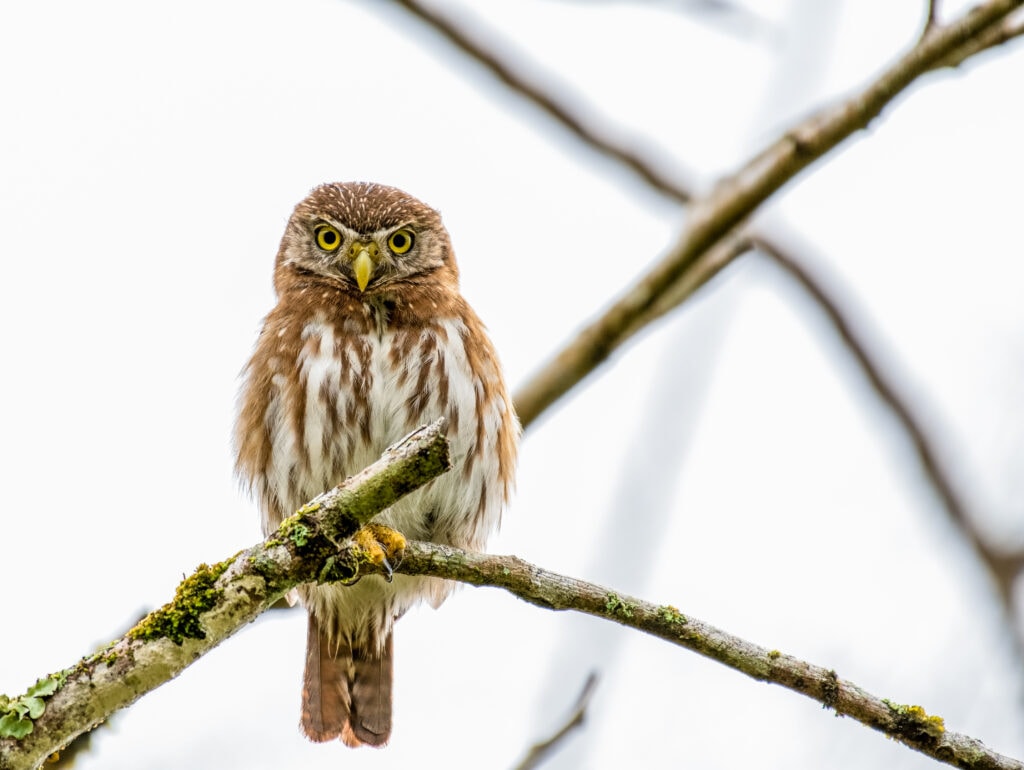The Cactus Ferruginous Pygmy Owl is quite a small bird for such a mouthful of a name. “Ferruginous” comes from the rust-colored stripes in their plumage, “cactus,” from the towering saguaro cacti in which they often reside, and “pygmy” for their diminutive size. At just 6.5 inches long on average, the Cactus Ferruginous Pygmy Owl is amongst the smallest owls in the world. Despite this, they are fierce hunters known to be capable of hunting and eating birds nearly twice their size.
Related Articles: Understanding the Conflict Between Bird Conservation and Renewable Energy
These tiny but mighty raptors have had a long and complex history with regards to conservation. In the United States, they are found exclusively in Arizona and Texas where they are reliant on the low elevation Sonoran Desert and the tree-like saguaro cacti which grow in these regions.
Due to declining numbers, the Cactus Ferruginous Pygmy Owl was added to the Endangered Species List in 1996. This population benefitted from the protections associated with the list until 2006 when, thanks to a lawsuit from land developers. It was determined, at that time, that the Cactus Ferruginous Pygmy Owl was not genetically distinct from other Ferruginous Pygmy Owl populations. Ferruginous Pygmy Owls are plentiful in the American Tropics. Ever since this decision, conservation groups have fought to restore these birds to the Endangered Species List which would entitle them to the appropriate protections.
In 2021, the United States Fish and Wildlife Service proposed the reintroduction of the Cactus Ferruginous Pygmy Owl to the Endangered Species List. In December of 2022, the proposed inclusion of these owls triggered a one year deadline for the government to finalize its endangered species status. Despite this, these owls have yet to receive federal protections. That is why the Center for Biological Diversity filed a lawsuit last month to enforce these protections and finalize the Cactus Ferruginous Pygmy Owl’s place on the Endangered Species List.
In their press release, the Center for Biological Diversity note that the Biden administration has been dragging its feet on protections for a number of proposed endangered species. The Biden administration has initiated protections for 11 species per year. This is less than one third of the rate of protections established by the Obama administration and indicates a troubling pattern of decline.
Because the Cactus Ferruginous Pygmy Owl is so dependent on saguaro cacti, and on the Sonoran Desert habitat on the whole, protections for this tiny raptor mean protections for this unique desert biome.
Popular Articles: British Bitterns are Bouncing Back

